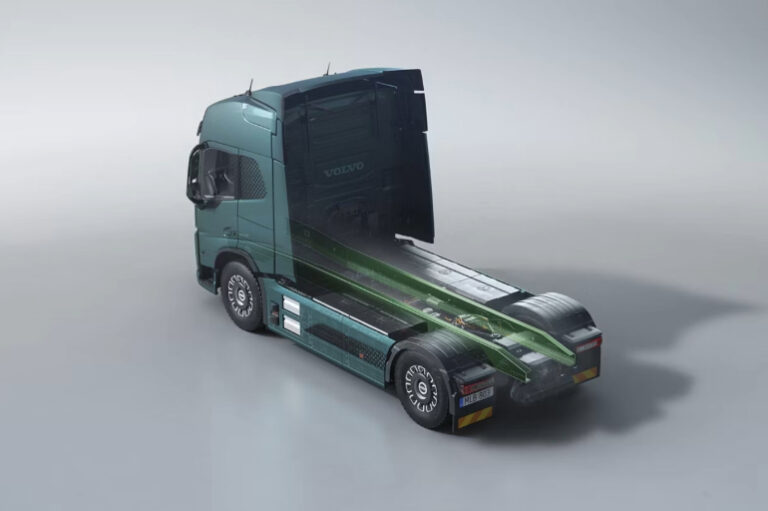Volvo is ramping up the use of low-CO2-emission steel in its wider range of trucks, after being the first truck manufacturer to introduce clean steel in its electric trucks back in 2022.
The new steel is produced by the Swedish steel company SSAB and is called SSAB Zero, made from recycled material and produced using fossil-free electricity and biogas.
According to Volvo Trucks, CO2 is reduced by around 80 percent compared to the production of conventional steel using fossil energy.
Next year, the frame rails in around 12,000 Volvo FH and FM trucks will be made of low-CO2-emission steel, which will result in savings of 6,600 tonnes of CO2 equivalents (greenhouse gas emissions such as methane).
As the availability of low-CO2-emission steel increases, it will be introduced in more truck models as well as in other parts of the truck.
Volvo Trucks says it is also planning to replace other materials in its trucks with lower emissions alternatives.
“This is an additional step towards our zero emissions vision,” said Volvo Trucks Senior Vice President Product Management and Quality, Jan Hjelmgren.
“Steel is one of the main materials in our trucks. We are also looking to exchange other materials, such as aluminium and plastic, to low emission alternatives. We are proud to lead the way in the industry when it comes to sustainable material in our trucks.”
The potential for lowering CO2 emissions is high, as almost half of the truck consists of steel (47 percent of a Volvo FH diesel truck), and it represents about 44 percent of the CO2 emissions from the production (cradle to gate) out of the total 21 tonnes CO2 Equivalents for the Volvo FH diesel.
Volvo Group is collaborating with several suppliers around low-CO2-emission steel. Low-CO2-emission steel will be an important complement to the traditional and recycled steel used in Volvo’s trucks.
Volvo Trucks is committed to the Paris agreement and to achieving net-zero greenhouse gas emissions in the supply chain by 2040, at the latest.
“We are continuously striving to further minimise our climate footprint. We are also moving towards greater circularity in both our operations and our trucks. Many of our factories, transports and dealers are today running on renewable energy,” said Mr Hjelmgren.






